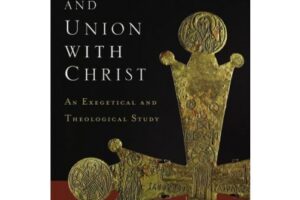I’ve recently watched a documentary show and some movies about the rise (and in some cases, the demise) of famous late 20th century CE hip-hop artists. Conflicts between American East-coast and West-coast artists and their supporters contributed in many ways to the popularity, but also to the controversy and eventual ruin of some rappers. For example, the ‘beef’ between West-coast rapper Tupac Shakur and East-coast rapper Notorious B.I.G. may have contributed to both of their deaths. This got me thinking about certain Christian patristic figures or theologians who got caught up in controversy leading to an East-West division. One particularly notorious figure that came to mind was Nestorius.
Bearer of Christ or God?
Nestorius (386–450 CE)1 was a pupil of Theodore of Mopsuestia in Antioch, a priest and monk, and the Archbishop of Constantinople from 428–431 CE. His time as Archbishop was short-lived due to christological disagreements with others in the Church, including his chief opponent, Cyril of Alexandria. Nestorius was most notorious for his view that Mary should be understood as the Christotokos (‘Christ-bearer’), rather than the Theotokos (‘God-bearer’), fuelling a controversy leading to his condemnation at the First Council of Ephesus (431 CE) under Emperor Theodosius II and his eventual anathematisation at the Council of Chalcedon (451 CE). Clearly, Nestorius’ opponents had some ‘beef’ with him.
The First Council of Ephesus concluded the doctrine of the Hypostatic Union to be the orthodox view, so that Christ has one divine-human hypostasis as opposed to two (one divine and one human). This latter view was deemed heretical (or heterodoxical) and was attributed to Nestorius, becoming known as ‘Nestorianism’, but he may not have even taught a multi-hypostatic view himself. In other words, Nestorius’ attempt to keep Christ’s divinity and humanity distinct resulted in a supposed view that Christ was two persons in the incarnation. Yet, Nestorius defended the view that Christ has two natures in one person, a view he called ‘orthodox’. He perceived the view of Cyril to be heretical and just another form of Apollinarianism. Nestorius held that God is impassable and that Christ the Son died on the cross, not God the Word. Thus, Cyril’s view that Mary bore God (i.e., she is the Theotokos) implies a passible God who would later suffer on the cross.
Ending an episode of epistolary correspondence between these figures, Cyril wrote a final letter to Nestorius with 12 Anathemas appended and required his signature (ca. 430 CE). Cyril then later wrote his Adversus Nestorii blasphemias (‘Against the blasphemies of Nestorius’).
What is interesting is that Nestorius, like other ‘heretics’ or defenders of heterodoxical views, was not immediately deemed to be wrong and he actually had some decent supporters. In fact, he attempted to be diplomatic and negotiate christological disagreements between groups. Unfortunately for him, his attempt to resolve debate by developing the Christotokos view backfired and ended with his ecclesiastical demise.
Influence on Christology
Nestorius left an impact on later doctrinal discussions about Christology. As already mentioned, ‘Nestorianism’ was attributed to him; irrespective of the accuracy of these views to his own, his voice nevertheless influenced christological discussions. Nestorius’ view of Mary as the Christotokos was even later deemed to be a form of Dyophysitism (the view that Christ has ‘two natures’—human and divine), as opposed to Monophysitism (the view that Christ has ‘one nature’—divine or human-divine). The latter of these views was considered heretical whilst the former became orthodox at Chalcedon (451 CE).
Those of the [eventually official] orthodox persuasion might say that Nestorius, like other ‘heretics’ of the Church, was a necessary or at least useful figure in clarifying and establishing orthodox views; that is, the popularity of what would be deemed heretical or heterodoxical created opportunities for the Church to investigate their scriptures and traditions in order to determine the unorthodoxy of these very perspectives, thus further defining orthodoxy. This principal would be along the lines of what one might ascertain as fundamentally behind Paul’s declaration in the Corinthian correspondence when he said, ‘For it is necessary also for factions to be among you, in order that those approved may become manifest among you’ (1 Cor 11.19). In any case, ‘orthodoxy’ as established by the Ecumenical Councils is not accepted by all.
Going strong in the East
The reality is that Nestorius and his supporters deemed Cyril of Alexandria and his supporters to be the followers of heterodoxy and heresy. Pope Caelestine was amongst the supporters of Cyril since Rome and Alexandria already held synods deposing Nestorius. Theodosius II supported Nestorius at least at first, having been the one to appoint him to his see. Theodosius II wanted the First Council of Ephesus to be the deciding matter which supersedes any previously held synods. But Nestorius soon found little support when he was abandoned by many of his supporters. Cyril gained virtually unanimous support early at the council. Yet, some bishops were not happy with Cyril’s tactics upon their arrival and organised a synod where they condemned him instead.
At least for a short time both figures were deposed, but eventually Theodosius II turned against Nestorius and the remaining bishops who supported him, deposing them all. Despite this, the Church of the East has never officially accepted these rulings or the decisions of these councils. Nestorius is still canonised as a saint and venerated in the Assyrian Church of the East, the Syro-Malabar Church, and the Ancient Church of the East. His Feast is celebrated on October 25 and his impact on many eastern Churches is still going strong. This ‘beef’ between East and West remains even today. Nestorius may be perceived as a heretic in the West, but he is quite a star in the East.
I guess you could say that Nestorius was and still is a B.I.G. deal!
Endnotes
1. Most of the details given in this post are adapted from some general works on Nestorius and Cyril of Alexandria as well as the writings of these ancient authors themselves: John A. McGuckin, St. Cyril of Alexandria: The Christological Controversy (Lieden: Brill, 1994); Norman Russell, Cyril of Alexandria (London: Routledge, 2002); Susan Wessel, Cyril of Alexandria and the Nestorian Controversy: The Making of a Saint and of a Heretic (Oxford Early Christian Studies; Oxford University Press, 2004). For Nestorius’ Bazaar of Heracleides see the French translation of the Syriac by F. Nau, La livre d’Héraclide de Damas, avec la concours du R. P. Bedjan et de M. Brière: suivi du texte grec des trois Homélies de Nestorius sur les tentations de Notre-Seigneur, et de trois appendices, Lettre à Cosme, Présents envoyés d’Alexandrie, Lettre de Nestorius aux habitants de Constantinople (rprt. Farnborough: Gregg International Publishers, 1969). For some of the works of Cyril of Alexandria see Clavis Patrum Graecorum. III. A Cyrillo Alexandrino ad Iohannem Damascenum, ed. Maritius Geerard et al. (Corpus Christianorum. Clavis Patrum Graecorum, III; Turnhout: Brepols, 1979); for some translations of Cyril of Alexandria’s works see: Against those who are unwilling to confess that the Holy Virgin is Theotokos, ed. and trans. George Dion. Dragas (Rollinsford, NH: Orthodox Research Institute, 2004); Five Tomes Against Nestorius, Introduction by P.E Pusey and E.B. Pusey, pp. i–cv (A Library of Fathers of the Holy Catholic Church: Anterior to the Division of the East and West, vol. 47; Oxford, 1881); Letters 1–110, trans. John I McEnerney (Fathers of the Church, vols 76–77; Washington: Catholic University of America Press, 1987); On the unity of Christ, trans. John Anthony McGuckin (Crestwood, NY: St. Vladimir’s Seminary Press, 1995).





Leave a Reply
Your email is safe with us.